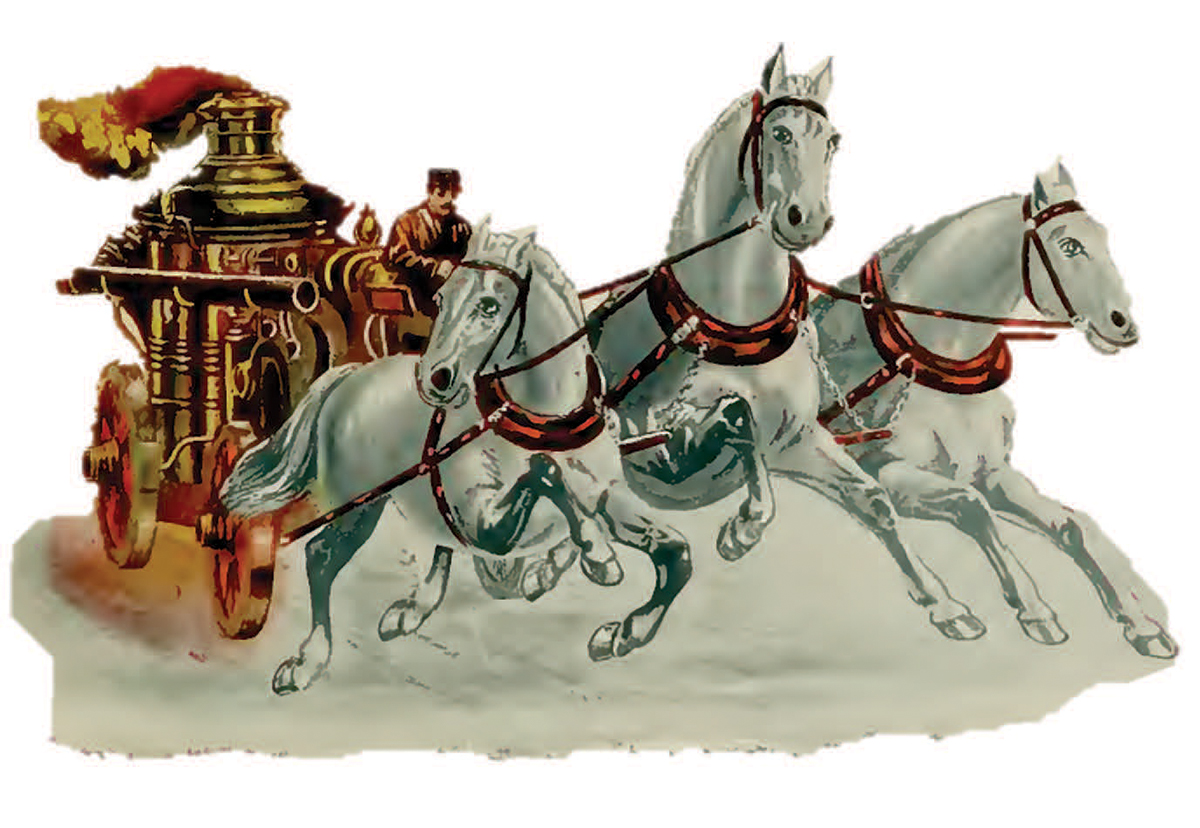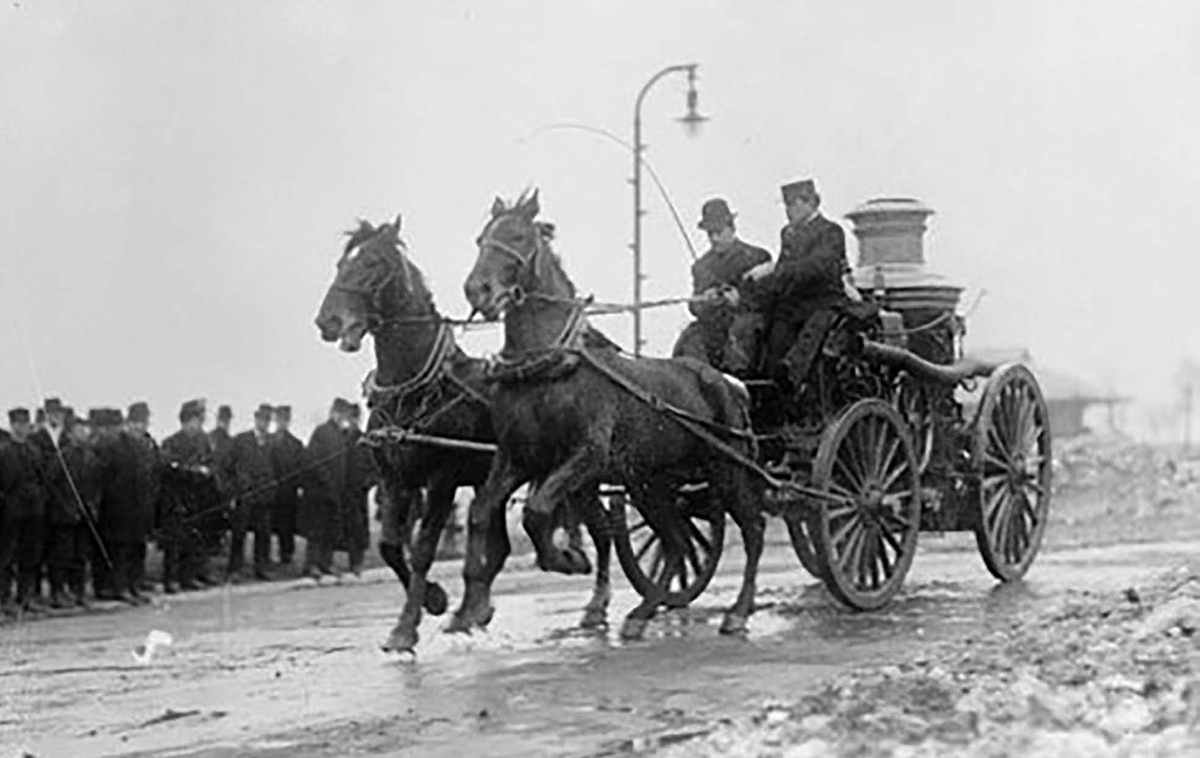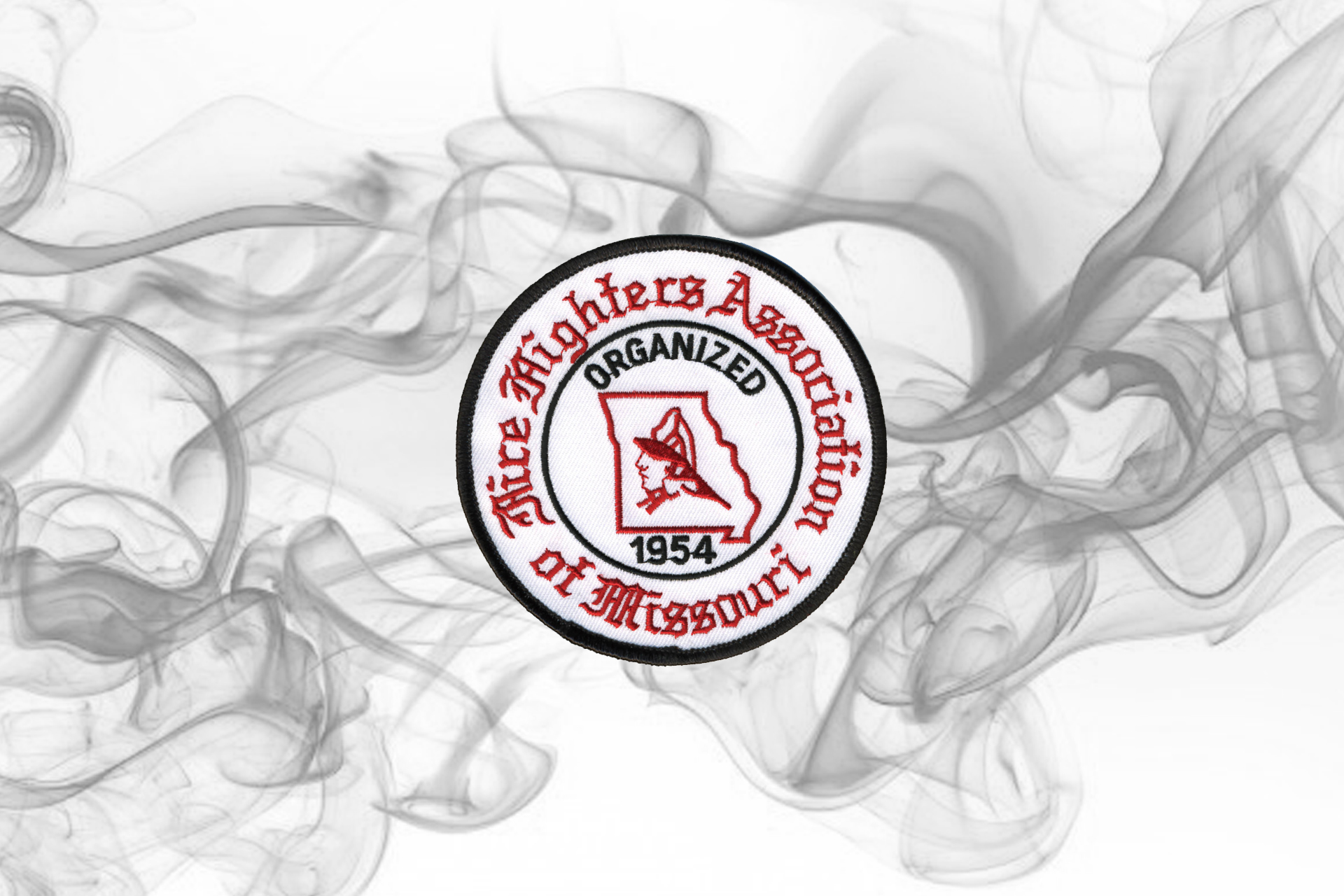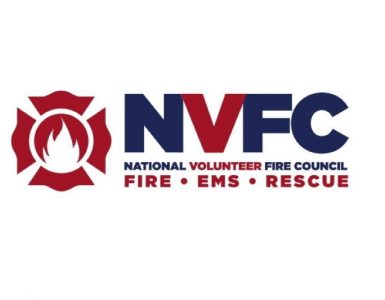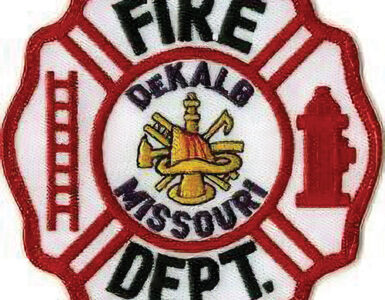Hidden within the history of the United States, there is a wealth of information concerning the fire service and its prolific history and traditions. Over the years there has been a substantial change in firefighting equipment, techniques, and procedures. Each of these changes has affected fire department operations and in some cases substantially impacted its organizational structure and culture. An important historical change in the fire service came about in the 1800s with the use of steam-powered fire pumps. Transitioning from traditional man-powered hand pumps to steam provided greater water flow capability for extended periods and better fire streams with more reach. The new fire steamers also required less manpower to “man the pump”. A drawback was the weight of the steam pumper and the ability to get it quickly to the fire scene. At first, pulled to the scene by manpower, still requiring a significant number of firefighters/citizen volunteers, it was quickly determined that a new way of transporting this cumbersome and heavy apparatus needed to be developed. This ushered in the era of the noble fire horse or the institution of horse-drawn fire apparatus. This unique period of horse-drawn fire apparatus only spanned a brief period of about 60 years, from around 1860 to 1920. Though this era was short-lived in fire service history, it had a significant impact on operational and cultural changes that shaped the future of the fire service. Replaced in the early 1900s with motorized fire apparatus, the days of the fire horse and the traditions created by that period are still uniquely present in some form today.
The addition of steam-operated fire apparatus and the accompanying horses to pull them brought several changes. Less manpower or firefighters were required to produce needed water flows and get the apparatus to the scene. However, this equipment created a need for full-time personnel to keep the steam boilers that powered the pump properly maintained and the horses cared for and ready. This brought about a shift to fewer volunteers and assigned working shifts as volunteers or the addition of the first paid personnel to oversee the boilers, engines, and horses.
We could spend quite a bit of time reviewing how the steamers maintained a hot boiler to be able to get up to steam quickly and safely, but let us just say that this caused innovation and re-design of fire stations with a variety of ways in which to preheat boilers and light fireboxes. It also required the addition of trained and qualified engineers to maintain and operate the steam boiler and pump. This was another creation of specialization in the fire service. But let us continue our focus on the means of transporting the new fire steamers, the fire horse.
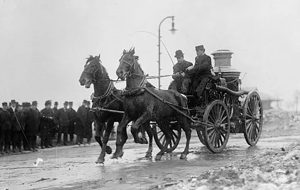
The Addition of the Fire Horse
Originally man-powered fire engines (hand pumpers) were manned by volunteers that both hauled the apparatus to the fire and then manned the fire brakes (pump lever handles) to generate the pressure to pump water on the fire. It was a point of pride as to which a fire company could get their fire engine to the scene first and pump the most water. This process required large numbers of volunteers or drafted citizens to help keep up the strokes of the pump going during a fire. The first use of fire horses was not easily accepted, and many firefighters resented and protested their use. One of the first recorded purchases of a fire horse was by the New York Mutual Hook and Ladder Company No. 1 in 1832.1 The reason they acquired a horse to pull their engine was presumed to be related to a yellow fever epidemic that created a shortage of manpower. As is the case for many early adopters of innovation, this move was not well received by the other fire companies in the area. Many years later it would be an ironic turn of events that decimated large numbers of fire horses and required many fire departments to temporarily return to firefighters and citizens manually hauling the fire engines and other apparatus to the scene. This event started in Buffalo around the fall of 1872 and spread throughout the country when a form of distemper called the epizootic spread amongst horses. The epizootic killed or sickened large numbers of fire department’s horse stock and affected the fire department’s ability to respond.
Gradually over time, fire horses were added to quickly and efficiently pull the heavy fire apparatus and steam pumpers to the scene. Steamers could weigh around 1400 pounds. Fire companies teamed horses in twos and threes to pull various pieces of equipment.2 Horses needed to be strong, fast, and easy to train. They also needed to remain calm around fires and the multitude of crowds and distractions of emergency scenes. The horse breeds of Morgan and Percheron or crossbreeds between the two were preferred by the fire service to fulfill these roles. 3
Development of the Quick Hitch Harness
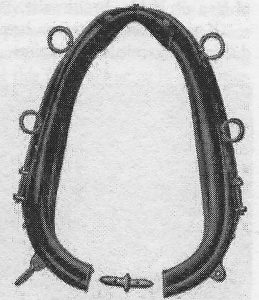
Initially, as horses were incorporated into the fire department, they were housed at a nearby livery stable and then led to the firehouse and harnessed when needed. Soon it was determined that there needed to be a more efficient and quicker turnout. Firehouses were modified or new ones built that included horse stalls adjacent to the apparatus and other necessary accouterments. In some cases, the hay to feed the horses was stored in the attic space above the second-floor living quarters of the fire crew. The sliding of hay bales down poles to get them from the attic hayloft to the fire apparatus floor is purported to have led to the development of the fire pole. But let’s save the controversially subject of who first invented the fire pole for future discussions.
Early on a variety of ways to have the horses hitched and ready for a quick response were tried. In some cases, multiple teams were used with one team always equipped with a basic harness to be quickly hooked to the apparatus. Other horse teams wore their harnesses all day and only removed them at night. Less costly and more efficient ways were sought, and again firefighters themselves developed the solution. A quick hitch harness was developed that was suspended from the ceiling above the drive pole(s) (wagon tongue). Horses were trained to respond from their stalls at the sound of the fire bell and stand still underneath the harnesses. The harness was lowered on a frame to the backs of the horses with collars and trace lines quickly hooked and snapped in place, the frame released and the horses ready to respond in less than a minute. Some horse stalls had spring-loaded gates that were opened by a lever by the watch officer. Other horses were trained to stay in their stalls with no gate until summoned.
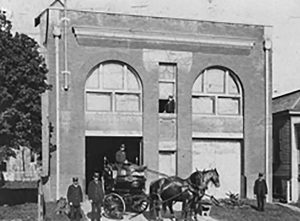
So who first developed the quick hitch fire horse harness system? That is one of the many controversial and disputed parts of fire service history. Many fire departments claim to have developed the system. In reality, it appears that various types of quick hitch harnessing may have been developed independently by innovative firefighters. However, some supposed contenders at being first are St. Joseph, MO, Kansas City, MO, Cambridge, MA, and Chicago, IL. At the risk of making some of my fire service peers upset, I have decided not to pick who was first. However, this historical question should have a more qualified answer, so let’s consider the available information.
Perhaps one of the earliest definitive books on early U.S. fire service history was written by Herbert T. Jenness, and titled: Bucket Brigade to Flying Squadron: Fire Fighting Past and Present. The book was first published in 1909 in Cambridge, Massachusetts. In Chapter VIII of the book the author relates the following information: “In 1871 the first hanging single harness was arranged and used in the fire department of St. Joseph, MO. About this time the first swinging double harness was placed in use in Allegheny, PA. In both cases, it was necessary to first put the collar on the horses. It was not until 1873 that those difficulties were overcome, when the foundation of the common swinging harness of today with its quick-locking hames, attached to a hinged collar, was invented by Charles E. Berry.” 4
Mr. Berry was a member of the Cambridge, MA, Fire Department and assigned as a relief engineer. He developed his system after an extensive review of the various ways each fire company used to harness the horses. He developed a prototype harness system and it was quickly adopted by the fire department. He patented his invention and sold them throughout the world as “Barry Hames and Collars.” 5
Actual film footage recorded the response of a fireman using a quick hitch harnessing system in the silent era film Day in the Life of a Fireman by Edwin Porter. 6 Porter is recognized as an innovative film director who originated many of the film techniques used today. The film shot in 1903 and filmed and distributed by the Edison Manufacturing Company, depicts an exciting fire and rescue response. In the film, you can see the horses responding to their positions as the fire alarm is sounded. The fireman quickly lower and attach the harness and the horses and apparatus are starting out the door in about 19 seconds. Short video clips of this segment of the film can generally be found on internet sites such as YouTube. As a side note, it is interesting to see in the film that the chief’s buggy is the last one out the door.
All these changes enabled the fire horse to remain well-rested and unharnessed in their stall until the bell sounded, and then be quickly harnessed in a matter of seconds instead of minutes. With the implementation of horse-drawn fire apparatus and the soon-to-follow addition of quick hitch harnessing, firemen were able to establish the operating procedure of being able to exit the firehouse in less than a minute of receiving the alarm. The early beginnings of modern quick response.
Fire Horse Training
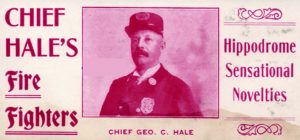
Initial training of fire horses was somewhat irregular. In the early days of the era when horses were boarded at local livery stables, they might also be used for other transportation duties in addition to fire response. Each fire company took it on themselves to train the horses to be adapted to their current apparatus and harnessing system. The horse breeds selected quickly showed their intelligence and ability to learn and the firefighters soon incorporated additional steps in the training. Larger fire departments established fire horse colleges for their horse teams. At the sound of the alarm bell, the horses left their stalls and galloped to the front of the fire apparatus positioning themselves in the proper place. There they stood still while the quick hitch harness was lowered on a hanging frame to their backs and the harness quickly hooked and hitched to the horse and rig. The weighted frame then released, swinging up and out of the way, and then the horses were ready to gallop off to the fire. There are some stories from the reference books that document several times when the driver was slow in mounting to the driver’s seat after the last hook fastened that the horse team took off without their driver. Well trained the horses followed the smell of smoke and went straight to the scene minus the driver. There they were found waiting in front of the fire. Once on the scene of a working fire, the horses were unhitched from the apparatus and taken a short distance from the steamer to rest while the fire was extinguished. On long-duration fires, water and hay were brought to the scene to care for the horses. After the fire was out the horses, still in harness, were re-hitched to the apparatus and proudly pulled the engine home to quarters. If no calls came in during the day, horses were routinely exercised through simulated runs or by riding around the block. And of course the opportunity to be proudly displayed in various parades and community events.
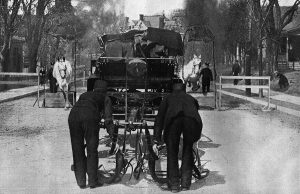
One of the first fire horse colleges was instituted by the Kansas City Fire Department. KCFD twice represented the United States as the “American Fire Team” at International Fire Congress: London in 1893 and a Paris exposition in 1900. The competition was based on how quickly a crew could harness their horse-drawn apparatus and exit the station house. The best time in Europe was 77.5 seconds but was handily beaten in 8.5 seconds by the team from Kansas City.7 This was a famous period for innovation under the direction of Fire Chief George C. Hale. During this period, KCFD Fire Chief Hale developed over 60 different patents related to firefighting. Including one for a new version of the quick hitch swinging harness. Other major city fire departments such as Detroit and Chicago were well respected for their Fire Horse College training programs.
The End of the Era
Though the age of the fire horse had advanced the fire service response and capabilities, it was soon to pass after only about 60 years. As firefighters had sought innovation to haul equipment by the use of horses, the horses would yield to the invention of the internal combustion engine being applied to transportation. As fire apparatus was converted from horse-drawn to motor-powered, the fire horses began to be retired in mass. The era of the fire horse remained for a while in a few departments and/or assigned to back up apparatus. As it is difficult to document certain parts of fire service history, documenting where the last fire horse served on active duty is also somewhat speculative. There are many news articles on the last “run” of a fire department’s horse-drawn apparatus. Washington DC retired their last fire horse team, Barney, Gene, and Tom, on June 10, 1925, after one final demonstration run. According to a Washington Post newspaper article, the horses had answered 700 alarms during their career. 8 The Rochester, New York FD retired “Chubby” their last fire horse in 1926.9 The author has in his collection an antique stick pin and card that was issued commemorating Chubby’s retirement from duty.
In an article entitled: “History’s Corner: The St. Louis Fire Department Justifiably Proud” and later republished in the FFAM book A Tribute to the Fire Service of Missouri, author Bill Westhoff, retired Fire Chief and past Director of the MU Fire and Rescue Training Institute, added a note on the last run of fire horses. Bill, writing about the St. Louis Fire Department, says that “On March 25, 1927, the fire horses made their final run, thus closing a colorful era in the fire department.” 10
The book The Fire Horse, A Historic Look at Horses and Firefighting, mentions that Portland (ME) Fire Department retired the last horse team of Dan and Pete in 1929. 11 The Fire Department’s website history page confirms the department’s last apparatus was motorized in 1929. So Portland may hold the record for having the last fire horses on active duty.
During this era as fire horses became too old, injured, or no longer fit for duty, they were retired from service. In the early days of the era, fire horses that were too old but still fit enough might be sold at auction for use in less strenuous jobs. It was found though that once trained to respond to fires, the fire horse was not suited for other menial services. Many of these horses would hear the local fire bell ring and take off in a mad dash to the fire no matter what wagon they were pulling. However, firefighters had become attached to their intelligent and noble companions and soon looked at ways to ensure a well-deserved and honored retirement. Various departments established a fund to properly retire and care for horses by putting them out to pasture at local farms to be cared for in their retirement.
In Closing
The Era of the fire horse was a time of great innovation in the fire service. Though it lasted only a brief 60 years, it helped lay the foundation of the beginnings of the modern fire service. The changes in manpower, staffing, specialization, and technical innovation all had a major impact on the United States Fire Service during this era. With the coming of dependable internal combustion motors, this innovation was quickly adopted into the fire service by replacing the fire horses with motor-driven apparatus. The era of the iconic fire horse had come to an end. Though the fire horse has disappeared from the firehouse, their legacy lives on through fire service stories and traditions that still honor those glorious olden days that teamed strong horses and brave men to fight fires and save lives.
